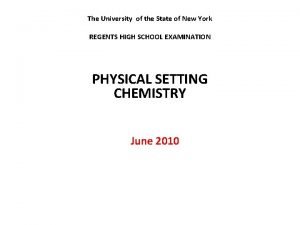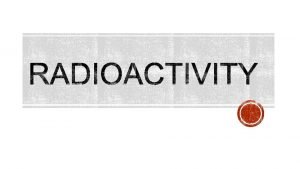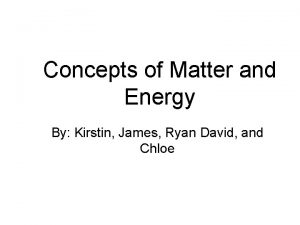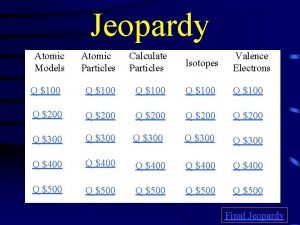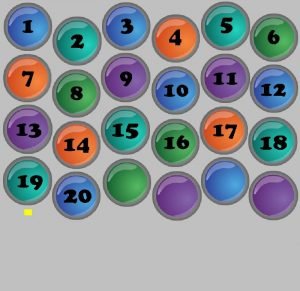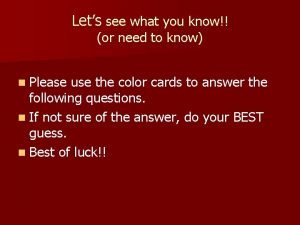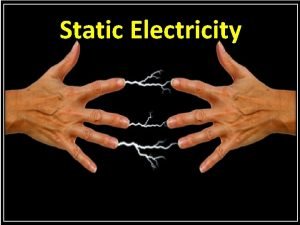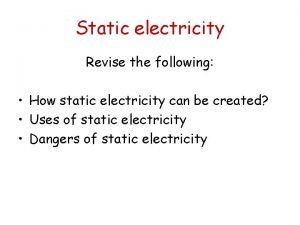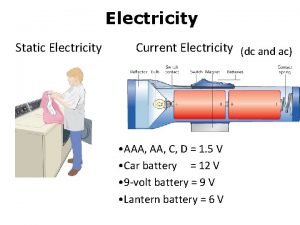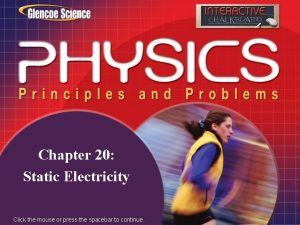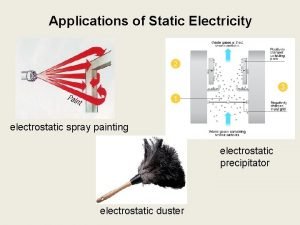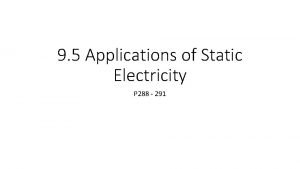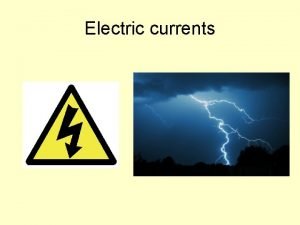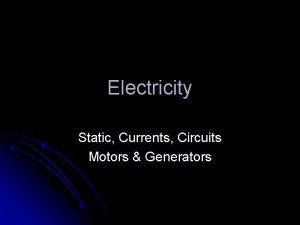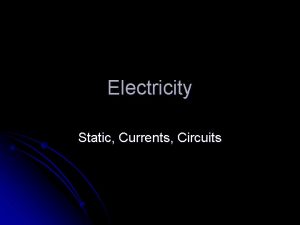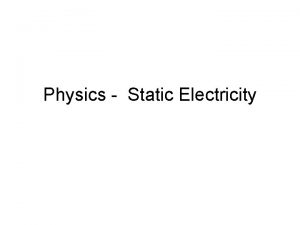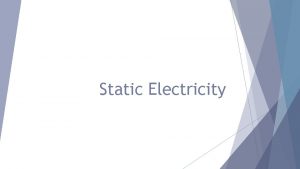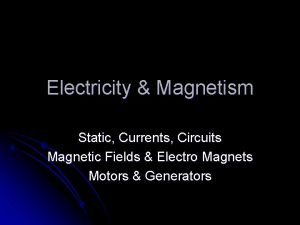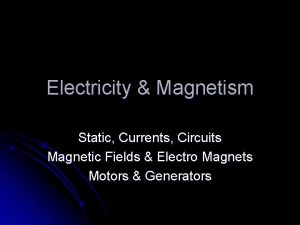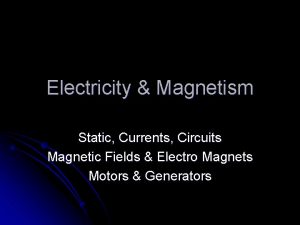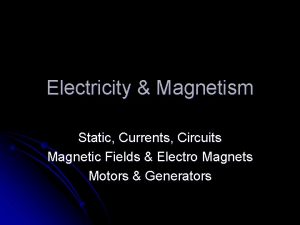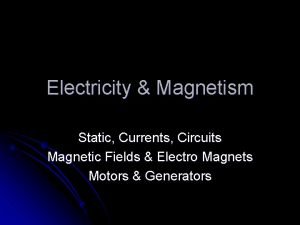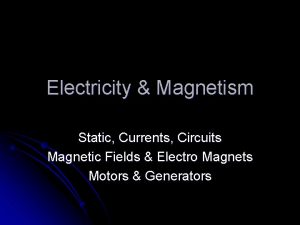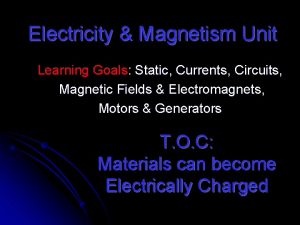Electricity Static Currents Circuits Atoms l Have neutrons




















- Slides: 20

Electricity Static, Currents, Circuits

Atoms… l Have neutrons, protons, and electrons. l Protons are positively charged l Electrons are negatively charged

Electrons… l Are located on the outer edges of atoms…they can be moved. l A concentration of electrons in an atom creates a net negative charge. l If electrons are stripped away, the atom becomes positively charged.

The world is filled with electrical charges: + - + + + + + -

What is this electrical potential called? l Static - Electricity - - - + ++ ++

Static Electricity l The build up of an electric charge on the surface of an object. l The charge builds up but does not flow. l Static electricity is potential energy. It does not move. It is stored.

Static Discharge… l Occurs when there is a loss of static electricity due to three possible things: l. Friction - rubbing l. Conduction – direct contact l. Induction – through an electrical field (not direct contact)

Electricity that moves… l Current: The flow of electrons from one place to another. l Measured in amperes (amps) l Kinetic energy

How can we control currents? l With circuits. l Circuit: is a path for the flow of electrons. We use wires.

There are 2 types of currents: l Direct Current (DC) – Where electrons flow in the same direction in a wire.

There are 2 types of currents: l Alternating Current (AC) – electrons flow in different directions in a wire

http: //www. youtube. com/wa tch? v=Hq. Mqd. FNWX 4 s#t=2 37

There are 2 types of circuits: l Series Circuit: the components are lined up along one path. If the circuit is broken, all components turn off.

Series Circuit

http: //www. youtube. com/watch? v=u 7 k 8 wpl_ZU&list=PLAO 5 c. UCypo 9 w-c. Fe. Jc 2 QGq. VW 0 n 4 ZV 42 Q 1

There are 2 types of circuits: l Parallel Circuit – there are several branching paths to the components. If the circuit is broken at any one branch, only the components on that branch will turn off.

Parallel Circuit

http: //www. youtube. com/watch? v=Mx. H 7 hnu. Bf. C 4&list=PLAO 5 c UCypo 9 wc. Fe. Jc 2 QGq. VW 0 n 4 ZV 42 Q 1


 Static electricity and current electricity
Static electricity and current electricity Current electricity gif
Current electricity gif Electricity and magnetism vocabulary
Electricity and magnetism vocabulary What is deep current
What is deep current Periodic table of elements regents
Periodic table of elements regents Series parallel circuit current
Series parallel circuit current Can an atom have more neutrons than protons
Can an atom have more neutrons than protons Can an atom have more neutrons than protons
Can an atom have more neutrons than protons Can an atom have more neutrons than protons
Can an atom have more neutrons than protons Atomic structure jeopardy
Atomic structure jeopardy How many neutrons does silicon 29 have
How many neutrons does silicon 29 have How many neutrons does the isotope n-14 have
How many neutrons does the isotope n-14 have Static electricity
Static electricity How does a photocopier work using static electricity
How does a photocopier work using static electricity Bill nye electricity
Bill nye electricity What year was electricity invented
What year was electricity invented Ampere unit
Ampere unit Difference between charge and electric charge
Difference between charge and electric charge Static electricity chapter 20 answers
Static electricity chapter 20 answers Spray paint static electricity
Spray paint static electricity Static electricity painting
Static electricity painting






